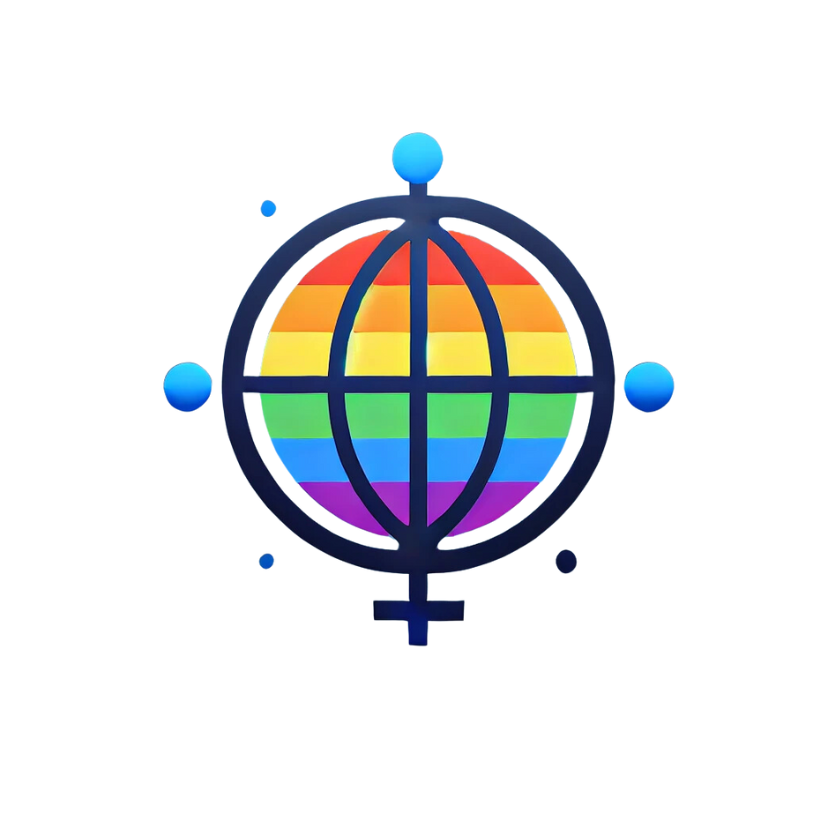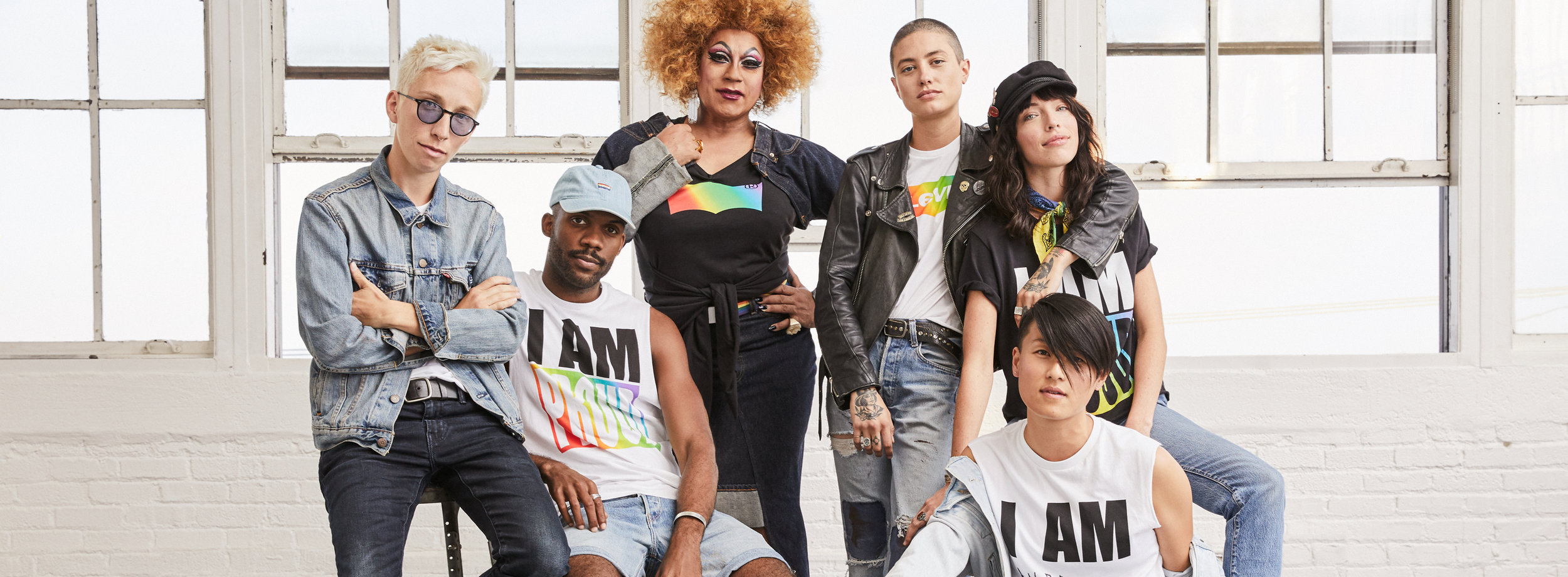The Problem With Corporatization & LGBTQ Pride
Following a month of Pride parades and festivals, with many more as summer draws to a close, let us, as part of the LGBTQ+ community, take time to critically analyze the role of corporate involvement in Pride festivities. While sponsorship of Pride events take money, the current approach by corporations has some major flaws. Rainbow or Pink Capitalism, as it has been called, has worked largely from a generalized consumer model using terms that are not specific to individuals with varying queer identities and sometimes even related to Pride whatsoever with words like “Pride,” “Equality,” “Support Love” with a slapped on rainbow. While the sentiment is good, it is generalized and is avoidant of queer identity terminology like “gay,” “bisexual,” “trans,” etcetera that are specific to our community. In some ways this sews possible distrust in the eyes of LGBTQ+ individuals that corporations avoid these terms in fear of reciprocity by conservative consumers, rather than whole-hearted support of queer communities.
Queer People Are More Than Consumers
Members of the LGBTQ+ community are not just seeking support from corporations in communities as clients. Concerns exist about the sourcing of products from countries that criminalize non-heterosexuality and those with different gender identities, or companies who have been seen as unfriendly to queer individuals within their corporate structures, as noted by the Human Rights Campaign’s Corporate Equality Index and watchdog groups like OutServe-LDN and state Equality organizations. Alternate Pride movements have formed to focus on Pride’s roots as a political protest, especially given the current political situation faced by marginalized people in the United States. Dyke March and Black Pride conduct marches rather than parades and promote protest centered Pride events. Donations are very controlled; for example, Dyke March takes donations and fundraised monies as approved by the organization but does not do any advertising for these organizations or any corporate interests. Mindfulness by individuals and watchdog groups is useful for identifying those whose support is confined to Pride month festivities, especially with companies who create Pride merchandise but do not donate profits to queer-specific support organizations, or who cap their donation amount and retain the remaining profits. It’s especially important that organizations are making efforts internally, politically, or by providing year-round queer products to move beyond merely cashing in on LGBTQ+ individuals’ buying power for a small part of the year, because queer people are more than consumers; we are still are marginalized group with battles yet to be won, nationally and internationally.
Pricing Out Advocacy Groups
Corporatization comes at a cost to LGBTQ advocacy organizations as well. Organizations who need the essential venue of Pride to provide services to the community have in some instances been priced out of participation by a rising focus on corporate or non-queer business vendors. The Chicago metropolitan area, for example, serves 9.5 million total individuals and has arguably the largest queer community in the Midwest, yet Chicago PrideFest this year featured only around a dozen advocacy organizations. This stands in stark comparison to New York City’s pride whose 450 vendors in 2017 were 75% nonprofit groups, leaving a few possible impressions:
- Chicago’s queer community is lacking in support and advocacy organizations
- PrideFest priced out advocacy groups or allotted given space to non-queer groups willing to pay more
In 2010, the Austin Chronicle featured an article on the Austin Gay and Lesbian Chamber of Commerce Pride pricing nonprofit advocacy groups at around $750 per organizations, which for smaller groups was too great a cost. The reason it is particularly problematic to charge local advocacy groups is due to their importance to community health and wellness, employment resources, suicide prevention and social opportunities, and Pride festivities are some of the largest opportunities to outreach to queer community members.
Where and How Corporate Sponsorship Can Be Useful
With a buying power of around 917 million dollars in the U.S. alone and 3.7 trillion dollars globally, it is understandable that corporations would try both to invest in queer communities and cash in at Pride festivities. And of course without sponsorships by companies it is unlikely that Pride events would have grown to the size and number they are today, but at what cost? Pride festivities in the United States originated as a protest for civil rights that were not being afforded to queer communities and in commemoration of the 1969 Stonewall Inn Riots in New York’s Greenwich Village. While the act of celebrating as a community publically is its own act of rebellion against a society that would rather marginalize groups not challenge the status quo, the Financial Times’ noted an interaction with queer individuals that showed where these celebrations fall short. “Kiki, 31 . . . and his friend Leela, 33, a black trans woman . . . They tell me they will be going to Pride that weekend, but with reservations. ‘The true meaning is gone,’ says Kiki . . . They are disillusioned not just with Pride’s commercialisation but also with the fact that, as its political power has been diluted, it has lost sight of the remaining groups who still suffer discrimination, such as transgender people.”
“The true meaning is gone,’ says Kiki . . . They are disillusioned not just with Pride’s commercialization but also with the fact that, as its political power has been diluted, it has lost sight of the remaining groups who still suffer discrimination, such as transgender people.””
What are ways that corporate sponsors can show true allyship to members of the LGBTQ+ community? Moving beyond selling products to members of the queer community is a good start. As many states still allow for discrimination against LGBTQ+ employees companies should show proactive support through explicit supporting language into their hiring and work practices that showcase a system of support for community members that goes beyond merchandise. Political action has also been a means of showing queer communities that companies truly value their rights, as with the companies who cut business ties with North Carolina after passing its HB2 bill. Going above and beyond for community activism and support is not a new concept. Forbes noted that “Sephora . . . launched a series of in-store programming around the country (and online video tutorials) for the trans and nonbinary community, hosted and developed by transgender Sephora cast members” and Levi’s has ranked highly on the “Human Rights Campaign’s Corporate Equality Index for the last 14 years; has engaged around various legal issues, including the recent HB2 injunction; and for nearly 2 decades has supported HRC initiatives, like Project One—a campaign to dramatically expand LGBTQ+ equality in the South.” These companies have moved beyond sponsorship of Pride festivities and have taken to true advocacy as part of their corporate model to prove that they are allies to queer individuals.
In terms of direct involvement Pride sponsorships corporations and Pride organizers should support Pride for what it is without elaborate booths and vendor booths that might detract from the activist spirit at the heart of Pride. In Iceland, for example: “At Reykjavik Pride . . . sponsors are prevented from displaying logos at the march — they are featured, instead, on the event’s website and in ads in its magazine. ‘The reason,’ says the event’s treasurer Gunnlaugur Bragi Bjornsson, ‘is to keep the focus on the cause, what we have achieved and what is yet to be won. One of our challenges is to not get too mainstream and lose sight of our main goals; we believe it’s likely that corporate floats would outshine our important message.’” This move by organizers and corporations emphasizes support of Pride without the current consumer centered approach to profiting off of members of the LGBTQ+ community.
Written by Matthew Farrar
Sources [In Order of Appearance]:
Dupere, K. (2017). “Dear corporate America, leave our LGBTQ pride celebrations alone.” Mashable. https://mashable.com/2017/06/24/lgbtq-pride-corporate-resistance/#deXwohEj4Oqj
Morash, A. (2017). “Pride fests too corporate, in danger of being left behind.” Advocate. https://www.advocate.com/commentary/2017/4/26/pride-fests-too-corporate-danger-being-left-behind
Chhetri, K. (2018). “Pink capitalism: Why companies need to go beyond the rainbow.” Affinity. http://affinitymagazine.us/2018/04/19/pink-capitalism-why-companies-need-to-go-beyond-the-rainbow/
Moskowitz, P. (2017). “Pride got corporate, and activists got pissed.” Vice Media. https://www.vice.com/en_us/article/a3z4zg/pride-got-corporate-and-activists-got-pissed
Kurtzleben, D. (2012). “How corporations are profiting from gay pride.” U.S. News & World Report. https://www.usnews.com/news/articles/2012/06/11/how-corporations-are-profiting-from-gay-pride
Levin, S. (2016). “Too straight, white and corporate: why some queer people are skipping SF Pride.” The Guardian. https://www.theguardian.com/us-news/2016/jun/25/san-francisco-gay-pride-corporate-orlando-shooting
Mason, A. (2016). “Are Pride parade’s corporate ties undermining its original queer activist message?” WBUR. http://www.wbur.org/artery/2016/06/10/pride-paradess-corporate-ties
Campbell, A. (2010). “The cost of pride.” Austin Chronicle. https://www.austinchronicle.com/daily/gay-place/2010-06-03/the-cost-of-pride/
Eadens, S. (2018). “Corporations need to ‘walk the walk’ before displaying Pride ads, LGBTQ Chicagoans say.” Chicago Tribune. http://www.chicagotribune.com/entertainment/ct-ent-corporate-pride-0622-story.html
https://www.marketwatch.com/story/why-lgbt-pride-festivals-have-become-increasingly-corporate-2017-06-23
(2016). “America’s LGBT 2015 Buying Power Estimated at $917 Billion.” Witeck Communications. http://www.witeck.com/pressreleases/2015-buying-power/
Ross, I. (2017). “The business of gay pride.” Financial Times. https://www.ft.com/content/228207c6-5f46-11e6-ae3f-77baadeb1c93
Ferguson, M. (2018). “4 Brands That Did Pride Proud.” Forbes. https://www.forbes.com/sites/meredithferguson1/2018/07/03/4-brands-that-did-pride-proud/2/#3470ba1b74e6

